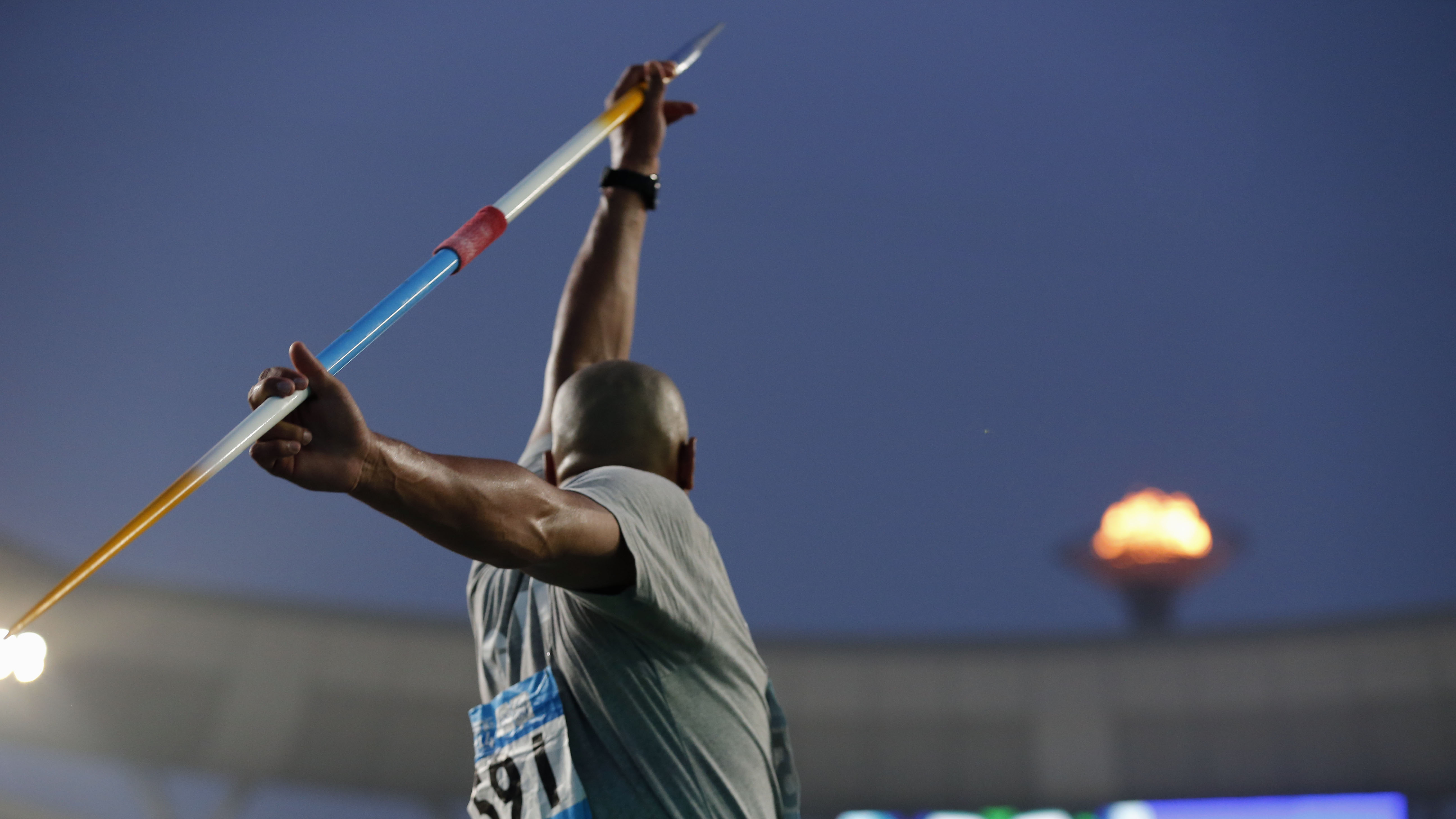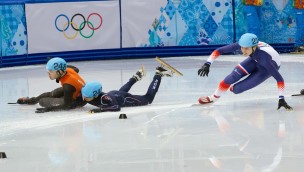Are you familiar with the most common shoulder injuries?
Read more about them here.

Shoulder injuries can be divided into two categories: acute injuries and overuse injuries. This page provides an overview of the most common injuries from both of these categories.
The acute injuries occur most often in sports where there is a high risk of falling, or where there are is a lot of contact. These injuries occur instantly and without warning.
Overuse injuries build up over time and are not the result of one particular incident. The cause is usually from overloading over a period of time. The good news is that these can be prevented by (amongst other things) adjusting the training load in relation to one's abilities for performance and tolerance. Even though acute injuries often occur unexpectedly, it is still possible to aid in their prevention. Read more about training for injury prevention by following the link at the bottom of the page.
Acute shoulder injuries
Broken collarbone
The collarbone goes from the sternum to the shoulder blade. A fracture in the collarbone is most common in contact sports and cycling, often occurring as the result of a fall or a severe impact to the shoulder. Broken collarbones are often treated without surgery, and the injury is usually fully healed within six weeks. In some cases, surgery may be considered for a quicker return to sport.
Dislocated shoulder
The shoulder can be dislocated in several directions, but it goes forwards in 95% of cases. The most common cause is falling on an outstretched arm, or that the arm experiences an impact while it is facing outwards and upwards (a so-called outward rotation of an abducted arm). An example of this is when a handball player is hit while shooting for goal. A dislocated shoulder is quite painful, and the injured person will have immediate problems moving their arm. A rehabilitation period of at least 3 months is advisable before returning to normal sporting activities.
Post-traumatic shoulder instability
Once you have had a dislocated shoulder, there is a higher risk of it happening again. Repeated incidents of a dislocated shoulder can change the dynamics in the shoulder, leading to an increased risk of overuse injuries. The training program at the bottom of the page focusses on preventing this. If it doesn't help, surgery may be necessary.
Injury to the AC joint
The AC joint attaches the collarbone to the shoulder blade. An injury to the AC joint commonly results from falling on the shoulder. The severity of the injury varies, but in most cases, it can be treated without surgery. There is a good chance that a person will make a full recovery following an injury to the AC joint, but many people develop a slight bump in the area between the shoulder blade and the collarbone. This is normal and is usually unproblematic.
Fracture in the upper arm
When one falls on the shoulder or an outstretched arm, a fracture may occur in the upper arm bone (humerus). This injury frequently affects older people, those with brittle bones, and children.
The most common overuse injuries in the shoulder
Thrower's shoulder
Thrower's shoulder is a collective term for several types of overuse injuries, the most common being labral injuries and rotator cuff tendinopathy (see below). As the name suggests, this type of injury is common in sports that involve throwing, but also in swimming and other activities where the shoulder is stressed repetitively over time.
Thrower's shoulder is characterised by pain on the outside or the back of the shoulder. It occurs during or after an activity where the arm is above shoulder height. The pain is often difficult to localise and is associated with reduced strength and accuracy in performing the activity or movement. Examples of the type of activity are a tennis serve or throwing a handball. Sometimes the pain is combined with slipping or clicking in the joint.
The shoulder's joint capsule is essential for stability. Over time, the front part of the joint capsule gradually stretches out and can result in minor damage to the rotator cuff (the muscles around the shoulder blade) and the labrum.
Superior Labrum injury (SLAP lesion)
Repeated throwing movements by a large force and reduced muscle interaction can lead to a labral injury in the shoulder. The labrum is a cartilage rim that stabilises and protects the shoulder joint. The most common injury type is a so-called SLAP lesion, which means that the injury is located in the upper part of the cartilage rim where the biceps tendon is attached.
This injury is especially common in sports where a lot of the activity occurs above shoulder height, such as handball and swimming. It can be difficult to diagnose a SLAP lesion because it is often found in athletes who don't show any symptoms.
A damaged labrum can also result from an acute injury. For example, by falling on an outstretched arm.
Handball throwing load
A handball player throws at least 48 000 times per season. These throws can have a speed of up towards 100 km/h.
Rotator cuff tendinopathy
Rotator cuff tendinopathy is also referred to as tendonitis or tendon disease in the so-called rotator cuff muscles. These muscles contribute to shoulder joint stability. This condition is the result of overloading or impingement, which leads to pain and degeneration of the tendon(s) around the shoulder blade. The pain is aggravated by particular movements depending on which tendon is damaged. The conditions in the shoulder concerning space and movement mechanics can change, and pain can arise when the tendon impinges against a bone. Posterior impingement is common amongst athletes in throwing sports and occurs when the tendon is clamped between the head of the upper arm (humerus) and the shoulder blade (scapula).
Subacromial pain syndrome
This condition is usually caused by overloading in one or several tendons. Pain is localised in and around the shoulder. It can affect athletes of all ages, but it is more frequent in those older than 40. Activities that involve raising the arm above shoulder height can be difficult.
Recent research suggests that surgery is no more effective than conservative treatment, even with many operations. Therefore, conservative treatment should be the first choice when it comes to subacromial pain syndrome. This treatment is effective for most, but it can still take between 6 and 12 months of regular training before decent results are achieved. Conservative treatment includes:
- the use of pain relief medications (when necessary) for acute pain, but for no longer than 2 weeks
- graded, customised training with the focus being to improve the shoulder's movement mechanics (biomechanics)
- home exercises with low intensity and high frequency which combine eccentric training with stabilising exercises for the shoulder blade.


